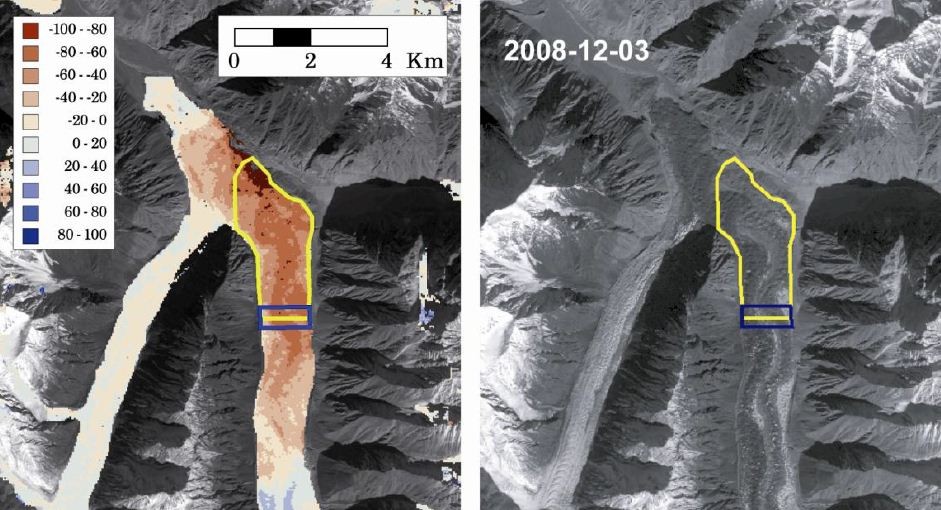At a time when most of the world's glaciers are thinning at a double rate, a few Himalayan glaciers have been growing thicker for over a decade now.
New satellite images and data have proved that some glaciers on the Karakoram mountain range, a part of the Himalayas, have gained ice mass, according to a report published in the latest issue of the journal
Nature Geoscience.
"Assessments of the state of health of Hindu-Kush-Karakoram-Himalaya glaciers and their contribution to regional hydrology and global sea-level rise suffer from a severe lack of observations. An anomalous gain of mass has been suggested for the Karakoram glaciers, but was not confirmed by recent estimates of mass balance," the scientists at France's National Centre for Scientific Research and the University of Grenoble noted in the report, titled "Slight mass gain of Karakoram glaciers in the early twenty-first century."
Based on the images acquired from LANDSAT TM, which provides higher resolution and highly accurate images of the Earth's surface, scientists found that a few glaciers in the region surged and advanced between 1998 and 2008.
The team found that out of the total glacier area of 5,615 sq km, about 1,460 sq km of area showed a surge in ice.
The report also suggests that between 1998 and 2008, the contribution of the glacier mass change in the central Karakoram mountain range to sea-level rise was nearly 0.05 mm per year, lower than actually thought before, providing an evidence of the glaciers growing thicker.
Furthermore, an observed reduction of river runoff that originates from the Karakoram glaciers supports the findings, note the authors of the report.
The Karakoram mountain range spreads across the borders between India, Pakistan and China, and houses world's second highest peak - K2. Outside the polar region, Karakoram has the world's most glaciated regions, most of which are covered with a layer of rubble.
Though baffled by this defying phenomenon of climate change observed on the Karakoram glaciers, scientists say that heavily debris-covered glaciers such as those on the Karakoram mountain range have lower retreat rates.
The response of the glaciers in the greater Himalaya to global warming is widely discussed since the controversial 2007 report by the Intergovernmental Panel on Climate Change (IPCC) stated that ice from most of the parts of the world could disappear by 2035.
However, the fate of the Himalayan glaciers in climate change was poorly known until the satellite images provided proof of thickening of the Karakoram glaciers, supporting a 2011 study that showed that there was no uniform response of the Himalayan glaciers to climate change .
The study by researchers at the Universities of Potsdam and California also claimed that more than 50 percent of the observed glaciers in the westerly-influenced Karakoram region in the northwestern Himalaya were advancing or stable, and that the effect of the debris cover on glacial retreat has been neglected so far.
Satellite image and data below show how the Karakoram glaciers thickened between 1998 and 2008.

© CNES 2008 / Distribution Spot ImageMap of Khurdopin Glacier, a surge-type glacier, during 2000-2008. The yellow polygon shows the area where the thinning rate (and thus the ablation rate) is averaged.

Reader Comments
to our Newsletter